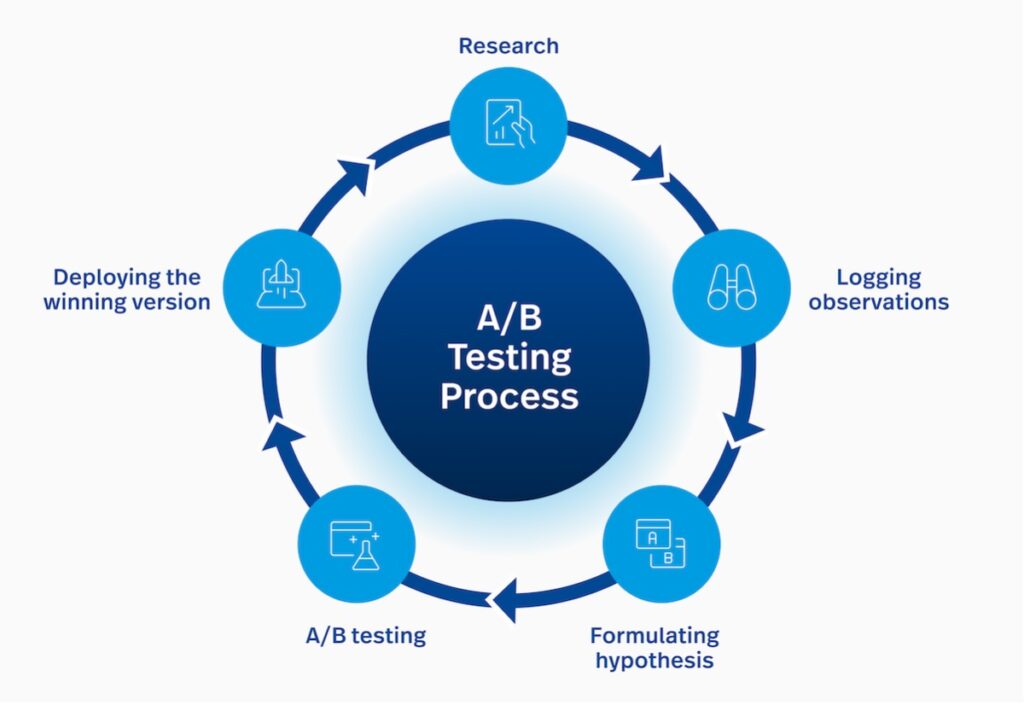*This article was last updated on 25/07/2023
Email marketing has long been a cornerstone of successful digital marketing strategies, and drip campaigns are a crucial component that can significantly boost your results. Welcome to this comprehensive guide on creating effective drip campaigns.
Picture a series of carefully crafted emails; each strategically sent out to your subscribers at specific intervals. The emails target customers based on interactions and behaviors. That’s how drip campaigns help nurture and guide your leads through a tailored journey.
The desired destination? The point of conversion, of course.
What Are Drip Campaigns?
Drip campaigns, also known as automated email campaigns or drip marketing, are a series of pre-scheduled, automated emails sent to subscribers over a specific period.
The term “drip” comes from sending these emails regularly, similar to a slow and steady water drip. The main goal is to guide subscribers through a journey that aligns with their interests, behavior, and engagement level.
Drip campaigns are always carefully designed to deliver relevant and valuable information based on specific triggers and actions. These include subscribing to a newsletter, completing a purchase, clicking on a particular link, or showing interest in specific things.
Advantages of Using Drip Campaigns
Understanding the fundamentals of drip campaigns sets the stage for creating impactful and effective strategies. Drip campaigns offer numerous advantages that make them an indispensable tool in your marketing arsenal:
- Nurturing Leads: Drip campaigns allow you to nurture your leads gradually, providing valuable content that addresses their pain points, builds trust, and establishes your expertise.
- Building Customer Relationships: Drip campaigns foster stronger relationships with your subscribers by delivering targeted content over time, making them feel valued and understood.
- Improving Engagement and Conversion Rates: Drip campaigns’ personalized and timely nature increases engagement, leading to higher click-through rates and ultimately boosting conversion rates.
Critical Components of Drip Campaigns
To create effective drip campaigns, it’s crucial to understand the key components that make them successful:
Email Sequencing
The sequence of emails in a drip campaign is vital. Each email builds upon the previous one and serves a specific purpose in the subscriber’s journey. The sequence should be carefully planned to maintain coherence and keep the subscriber engaged.
Automation and Triggers
Drip campaigns operate on automation. Subscriber actions or inactions trigger them. The automation saves time and ensures that the correct email is delivered at the right time, without manual intervention.
Targeted Messaging
Personalization and targeted messaging are at the heart of successful drip campaigns. By segmenting your audience based on their preferences, behavior, or demographics, you can send highly relevant content that resonates with each individual.
Now that we know the basics of drip campaigns, let’s see how we can optimize them to our most significant benefit.
Step 1. Set Your Drip Campaign Objectives

Establishing clear objectives before embarking on any marketing campaign, including drip campaigns, is essential. Setting well-defined goals will guide your entire strategy and ensure your efforts align with your business objectives.
Defining Your Goals
Setting clear and measurable goals is the first and most crucial step in creating effective drip campaigns. Whether you aim to boost sales, nurture leads, engage existing customers, or welcome new subscribers, defining your objectives will serve as a roadmap.
By understanding what you want to achieve, you can tailor your drip campaign’s content and messaging to align perfectly with your business goals, ensuring each email contributes meaningfully to your overall marketing strategy.
Examples of goals you can define include;
- Increasing Sales and Conversions
- Lead Nurturing and Education
- Engaging and Retaining Customers
- Onboarding and Welcoming New Subscribers
Identifying Your Target Audience
The success of your drip campaigns heavily relies on understanding and connecting with your target audience. By segmenting your email list, you gain invaluable insights into your subscribers’ preferences and needs.
This knowledge enables you to deliver personalized and highly relevant content to each group. That, in turn, fosters stronger connections and increases the likelihood of conversions. We want to ensure our drip campaign resonates with the correct people at the right time. Some things you can do include;
- Segmenting Your Email List
- Understanding Customer Personas
- Conducting Surveys and Feedback
Mapping the Customer Journey
Understanding when and where your subscribers interact with your brand allows you to deliver timely and relevant emails addressing their needs and interests. By crafting a well-structured flow for your drip campaign, you can guide your audience through a cohesive experience.
We aim to maximize the chances of converting prospects into loyal customers. Mapping the customer journey helps ensure that your drip campaigns integrate seamlessly into your broader marketing efforts, creating a cohesive and engaging experience for your subscribers.
- Determining Key Touchpoints
- Creating a Drip Campaign Flow
- Incorporating Multi-Channel Interactions
Step 2. Creating Your Drip Campaign Strategy
With a clear understanding of drip campaigns, established goals, and insights into your target audience, it’s time to create a well-defined strategy. In this section, we will explore the essential steps to develop a winning strategy that maximizes the impact of your drip campaigns.
Choosing the Right Email Marketing Platform
Research and compare different email marketing platforms to find one that aligns with your campaign’s needs. Look for features such as automation capabilities, advanced segmentation options, A/B testing, and robust analytics. Assess them based on things like;
- Scalability and Growth Potential
- Integration Capabilities
Selecting the Type of Drip Campaign to Run
There are several varieties of drip campaigns you can opt to run. They will do well in specific scenarios, provided you’ve selected the right strategy. Some types of drip campaigns you can consider include;
- Welcome Campaigns
- Onboarding Campaigns
- Abandoned Cart Campaigns
- Re-engagement Campaigns
Determining the Campaign Duration and Frequency
One crucial aspect of drip campaigns is determining the ideal campaign length and setting appropriate email intervals. You must also build a content calendar that ensures your drip campaign remains impactful and well-structured.
Striking the right balance between campaign duration and email frequency is vital to keeping your subscribers engaged without overwhelming them, leading to higher engagement rates and improved conversions. You need to consider;
- Setting Email Intervals
- Campaign Length
- Building a Content Calendar
Planning the Content and Messaging
Compelling content and persuasive messaging are the backbone of any successful drip campaign. This involves various activities such as;
- Tailoring Content to Segments
- Establishing a Compelling Narrative
- Incorporating Calls-to-Action (CTAs)
Step 3. Crafting Engaging Email Content
The success of a drip campaign hinges on the quality of its email content. Engaging, relevant, and valuable content can captivate your audience, drive interaction, and ultimately lead to higher conversions.
Here are the essential elements of crafting compelling email content that maximizes the impact of your drip campaign;
- Writing Compelling Subject Lines
- Creating a Sense of Urgency
- A/B Testing Subject Line
- Complementing the Subject Line
- Highlighting Key Information
- Storytelling and Emotional Appeal
- Building a Clear CTA
- Relevant Images and Visuals
- Utilizing Dynamic Content
- Leveraging Segment-Specific Content
Step 4. Implementing Automation and Triggers
Automation lies at the core of effective drip campaigns, allowing you to deliver the right message to the right audience at the right time. It also reduces process risk, ensuring minimal errors from human interference.
Throughout this process, you’ll need to;
- Set Up Automation Rules
- Identify Trigger Events:
- Understand and Use Timing and Delays
- Determine Personalization and Dynamic Content
Step 5. A/B Testing Your Drip Campaigns

A/B testing, also known as split testing, is a powerful technique to optimize the performance of your drip campaigns. It allows you to make data-driven decisions based on real subscriber behavior.
By testing different variables, you can identify what resonates best with your audience, leading to more impactful campaigns. At the very least, you’ll need A/B testing to fine-tune and optimize your campaigns.
Some areas to test include;
- Subject Lines and Preheaders
- Email Content and Design
- CTA Versions and Placements
- Timing and Frequency
Step 6. Measuring Drip Campaign Success
By consistently analyzing campaign data and making data-driven decisions, you can optimize your drip campaigns to deliver more significant results and achieve your business goals. We must leverage key metrics and tools to measure campaign success. For example;
- Tracking Key Metrics and KPIs
- Utilizing Email Analytics Tools:
- Iterating and Improving Campaigns Based on Data:
- Stress on Data-Driven Decision Making
- Analysis of Campaign Performance Reports
Compliance and Best Practices for Drip Campaigns
Maintaining compliance and adhering to industry best practices are essential to ensure the success and effectiveness of your campaigns while fostering a positive user experience.
Remember that crucial compliance considerations will vary depending on the location of your target market.
Ensuring GDPR and CAN-SPAM Compliance
- Obtain explicit consent from subscribers before adding them to your email list and starting a drip campaign. Implement double opt-in mechanisms to confirm subscribers’ intent to receive emails.
- Include clear and easy-to-find unsubscribe options in every email. Honor unsubscribe requests promptly to comply with GDPR and CAN-SPAM regulations.
- Provide a link to your privacy policy, explaining how you handle subscriber data and ensuring transparency in data processing practices.
Obtaining Proper Consent and Permission
- Send a confirmation email after subscribers opt-in to your drip campaigns, confirming their consent to receive emails. This helps ensure that only interested recipients are on your list.
- Segment your email list based on consent levels to ensure subscribers receive only the content they have explicitly agreed to receive.
Unsubscribe Options and Opt-Outs
- Streamline the unsubscribe process to make it as simple as possible for subscribers to opt out of your campaigns. Respect their preferences promptly and without requiring unnecessary steps.
- Allow subscribers to manage their subscription preferences, such as choosing the frequency of emails or opting for specific types of content.
Final Thoughts: Nurturing Leads and Driving Conversions
Drip campaigns are valuable for any email marketer looking to nurture leads, engage customers, and drive conversions. Following the proper process and adhering to best practices can elevate your email marketing efforts to new heights.
As you venture forward, remember the importance of staying adaptive and responsive to changes in your audience’s preferences and behaviors. Continuously test, iterate, and improve your campaigns to maintain relevance and maximize results.
